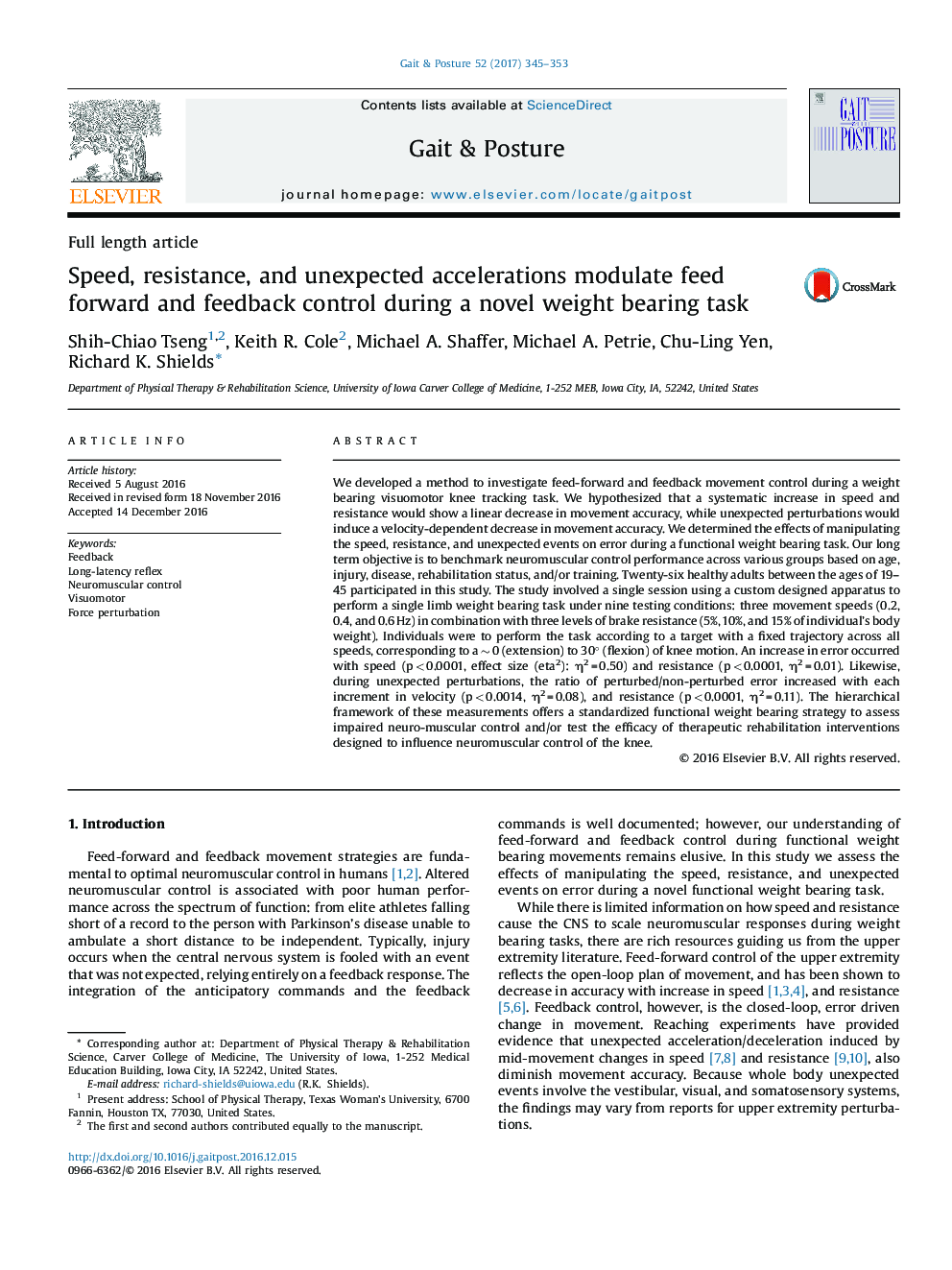| Article ID | Journal | Published Year | Pages | File Type |
|---|---|---|---|---|
| 5707565 | Gait & Posture | 2017 | 9 Pages |
Abstract
We developed a method to investigate feed-forward and feedback movement control during a weight bearing visuomotor knee tracking task. We hypothesized that a systematic increase in speed and resistance would show a linear decrease in movement accuracy, while unexpected perturbations would induce a velocity-dependent decrease in movement accuracy. We determined the effects of manipulating the speed, resistance, and unexpected events on error during a functional weight bearing task. Our long term objective is to benchmark neuromuscular control performance across various groups based on age, injury, disease, rehabilitation status, and/or training. Twenty-six healthy adults between the ages of 19-45 participated in this study. The study involved a single session using a custom designed apparatus to perform a single limb weight bearing task under nine testing conditions: three movement speeds (0.2, 0.4, and 0.6 Hz) in combination with three levels of brake resistance (5%, 10%, and 15% of individual's body weight). Individuals were to perform the task according to a target with a fixed trajectory across all speeds, corresponding to a â¼Â 0 (extension) to 30° (flexion) of knee motion. An increase in error occurred with speed (p < 0.0001, effect size (eta2): η2 = 0.50) and resistance (p < 0.0001, η2 = 0.01). Likewise, during unexpected perturbations, the ratio of perturbed/non-perturbed error increased with each increment in velocity (p < 0.0014, η2 = 0.08), and resistance (p < 0.0001, η2 = 0.11). The hierarchical framework of these measurements offers a standardized functional weight bearing strategy to assess impaired neuro-muscular control and/or test the efficacy of therapeutic rehabilitation interventions designed to influence neuromuscular control of the knee.
Related Topics
Health Sciences
Medicine and Dentistry
Orthopedics, Sports Medicine and Rehabilitation
Authors
Shih-Chiao Tseng, Keith R. Cole, Michael A. Shaffer, Michael A. Petrie, Chu-Ling Yen, Richard K. Shields,
